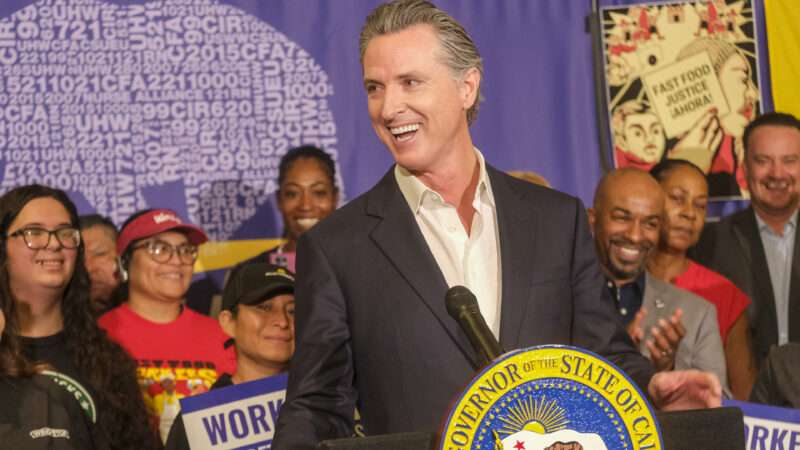
Last month, Gavin Newsom signed into law a California bill that will raise the minimum wage for fast food workers to $20 an hour starting in 2024. While the law has been hailed as a victory for low-wage Californians, the reality is much more complicated.
When states force industries to massively increase wages, the result isn't that the same number of employees start making more money. Instead, enacting a climbing minimum wage often results in higher unemployment and higher prices.
The law, originally Assembly Bill 1228 was passed as a compromise measure. Last September, Newsom signed the Fast Food Accountability and Standards (FAST) Recovery Act, which would have increased the minimum wage for fast workers to up to $22 an hour. In response, a campaign to get a measure to repeal the law on the 2024 ballot quickly sprang up. Ultimately, restaurant groups gathered enough signatures for the referendum.
Rather than face a ballot referendum over the law, Assembly Bill 1228 was crafted to repeal the FAST Act and replace it with a less extreme alternative following negotiations with restaurant and labor groups. The new law applies to employees working for fast food restaurants with more than 60 locations nationally, with an exception for businesses that bake their own bread.
However, even though a $20 minimum wage is less extreme than a $22 minimum, California's new fast food minimum wage will surpass the highest basic minimum wage in all other states—Washington DC's $17 minimum wage is the closest to California's new minimum for fast food workers. According to the Bureau of Labor Statistics, California fast food workers currently make $16.60 an hour on average, the third highest in the nation.
While ensuring that fast food workers get better pay may sound like a victory for the working class, there are major downsides to such high minimum wages. While things might be better for those workers who manage to keep their jobs—many business owners will likely be forced to lay off employees in order to keep the lights on or raise prices for consumers.
"The economic literature on minimum wage increases has become murkier in recent years, but the overwhelming majority of economists agree that large minimum wage increases in excess of productivity gains means that employers will operate at a loss as far as the affected workers go," wrote Michael D. Tanner, a senior fellow at the Cato Institute following the passage of the FAST act. "Given that the average profit margin in the fast food industry is just 6–9 percent, those costs are almost certain to be passed along in terms of higher prices or lost jobs."
Another side effect of California's new minimum wage law could be the acceleration in fast food companies' turn towards automation in an attempt to save on labor costs.
"Over the last few years, many Americans, myself included, have been to McDonald's and used touch screens to place our own orders instead of interacting with cashiers," wrote Brad Polumbo in the Washington Examiner this week. "Well, the more arbitrarily expensive you make human labor, the more companies are incentivized to hurry up and embrace automation."
Mandating higher and higher minimum wages for low-skilled jobs—like other government attempts to engineer labor market outcomes—ultimately rarely has its intended effect. Rather than making life better for Californians working in fast food, a new $20 minimum wage will likely cause many to lose their jobs.
The post California's $20 Minimum Wage Will Hurt the Fast Food Workers It's Meant to Help appeared first on Reason.com.







